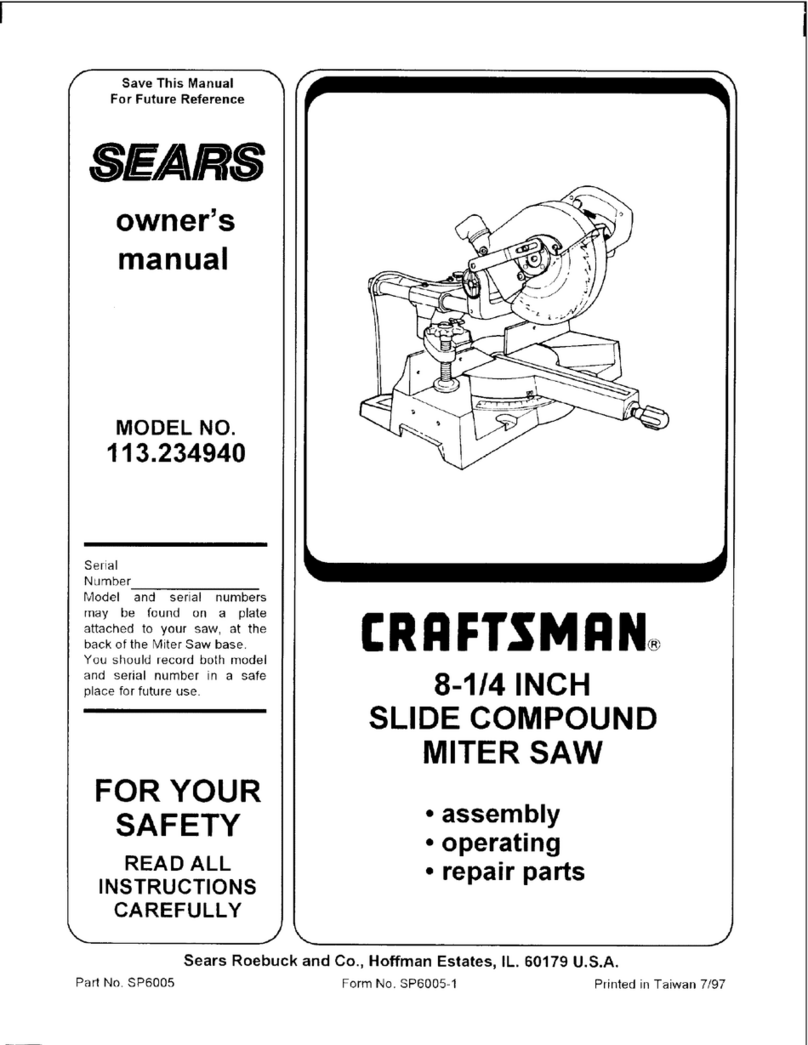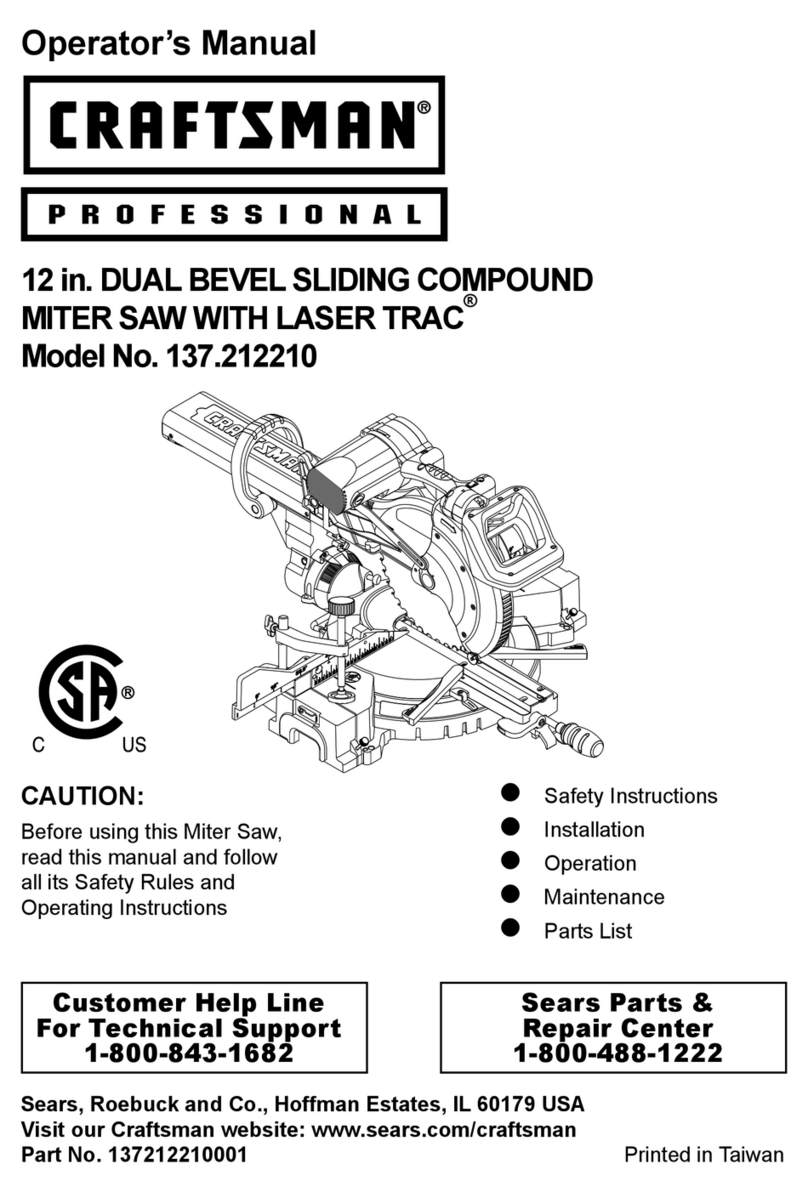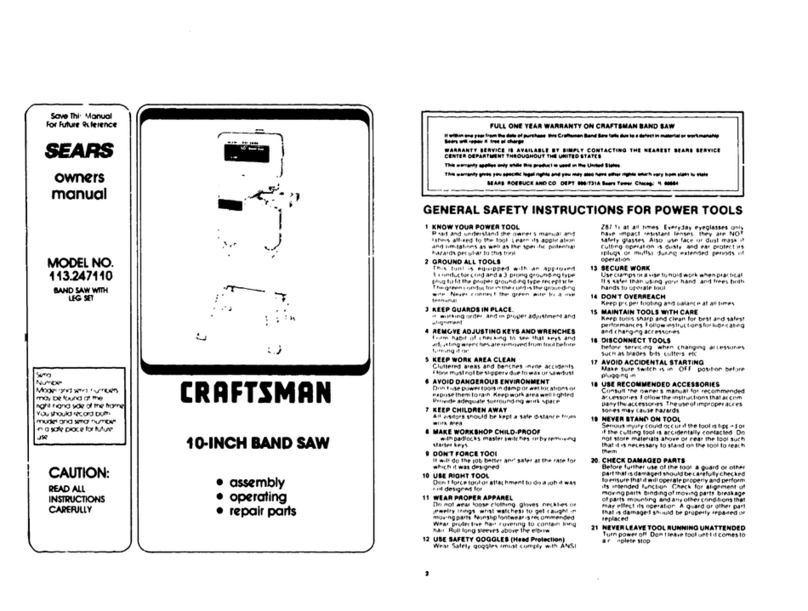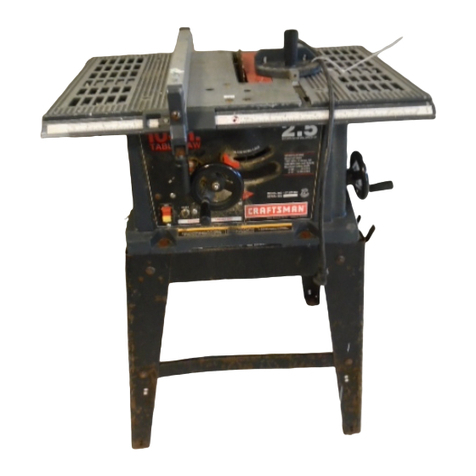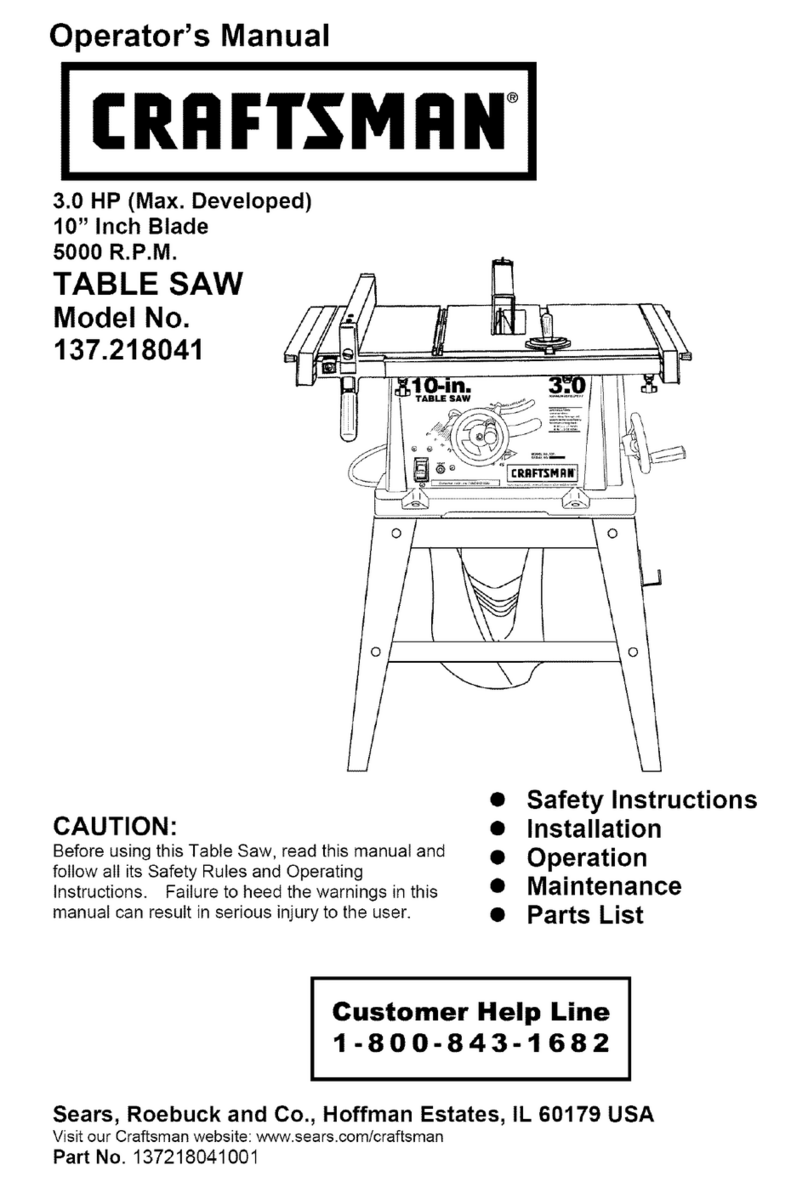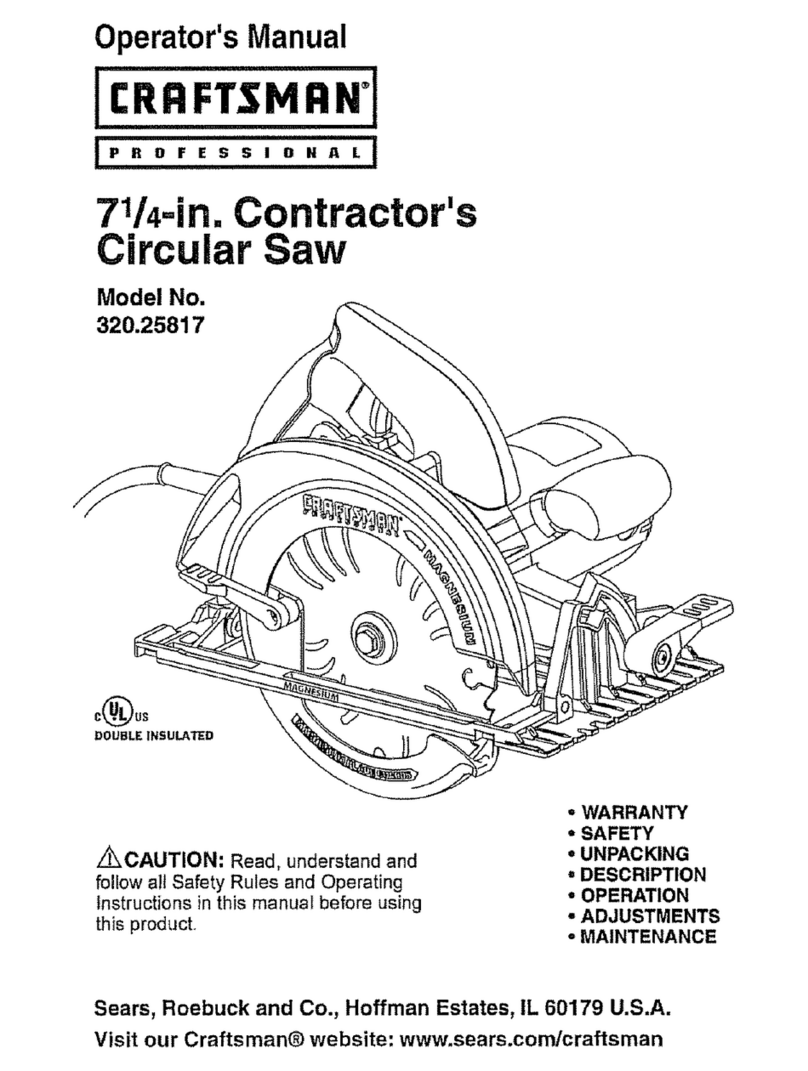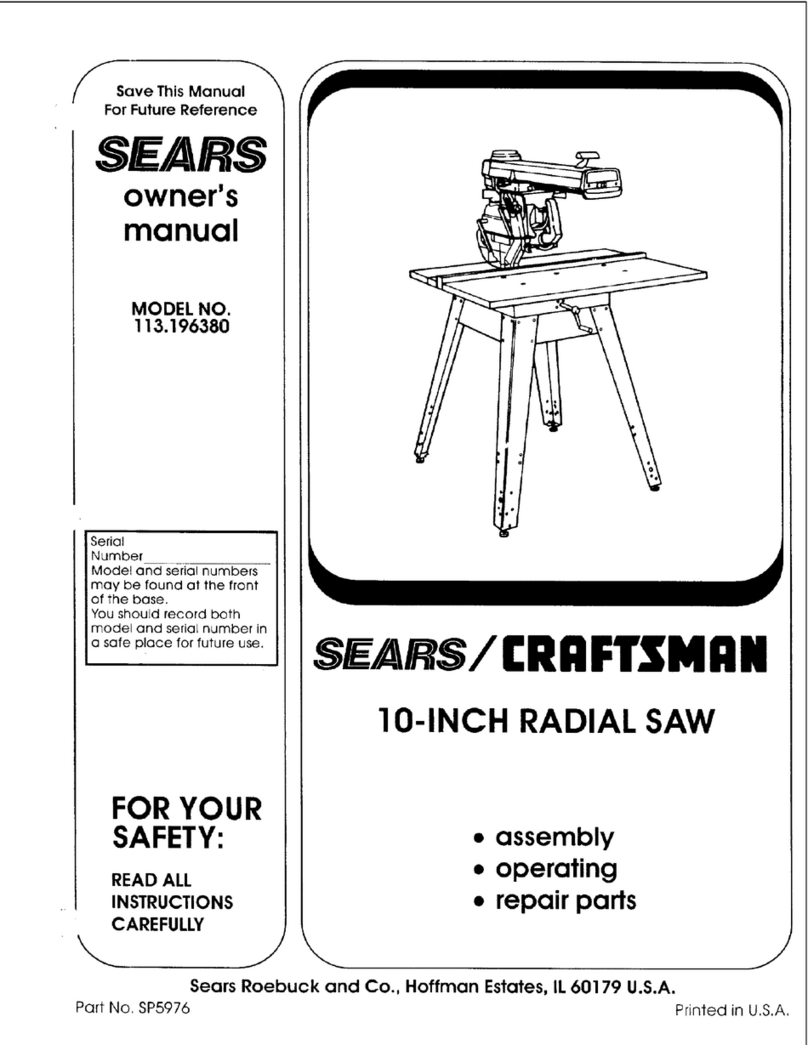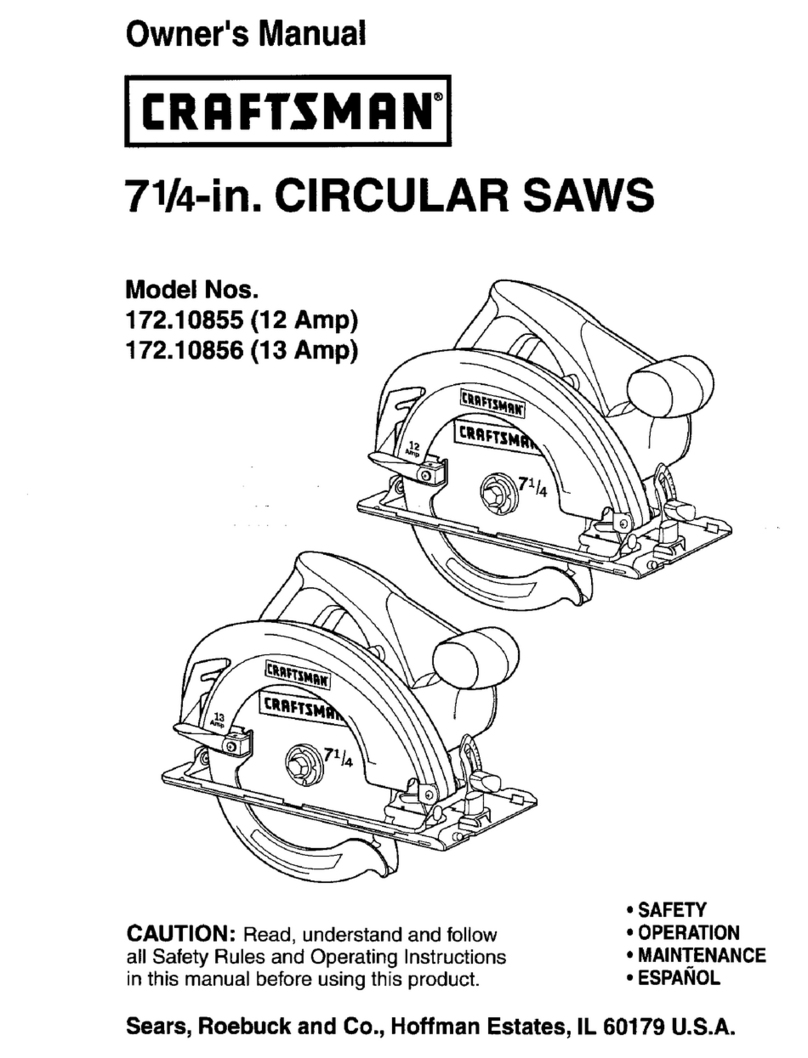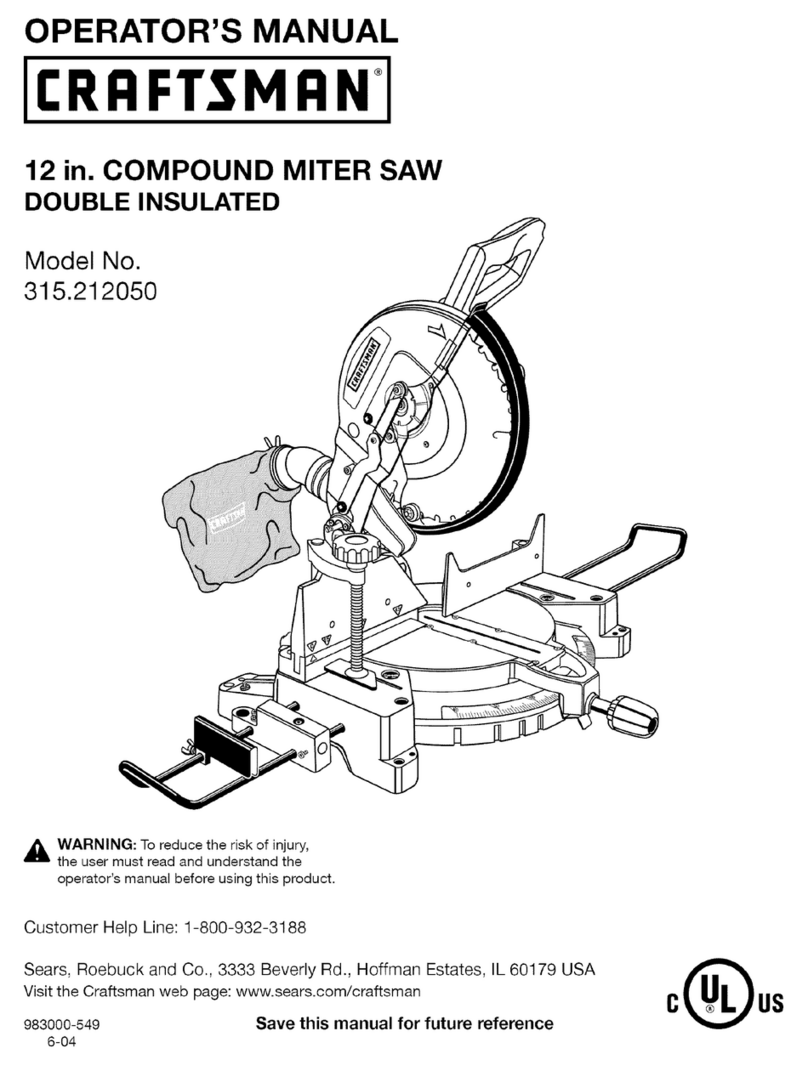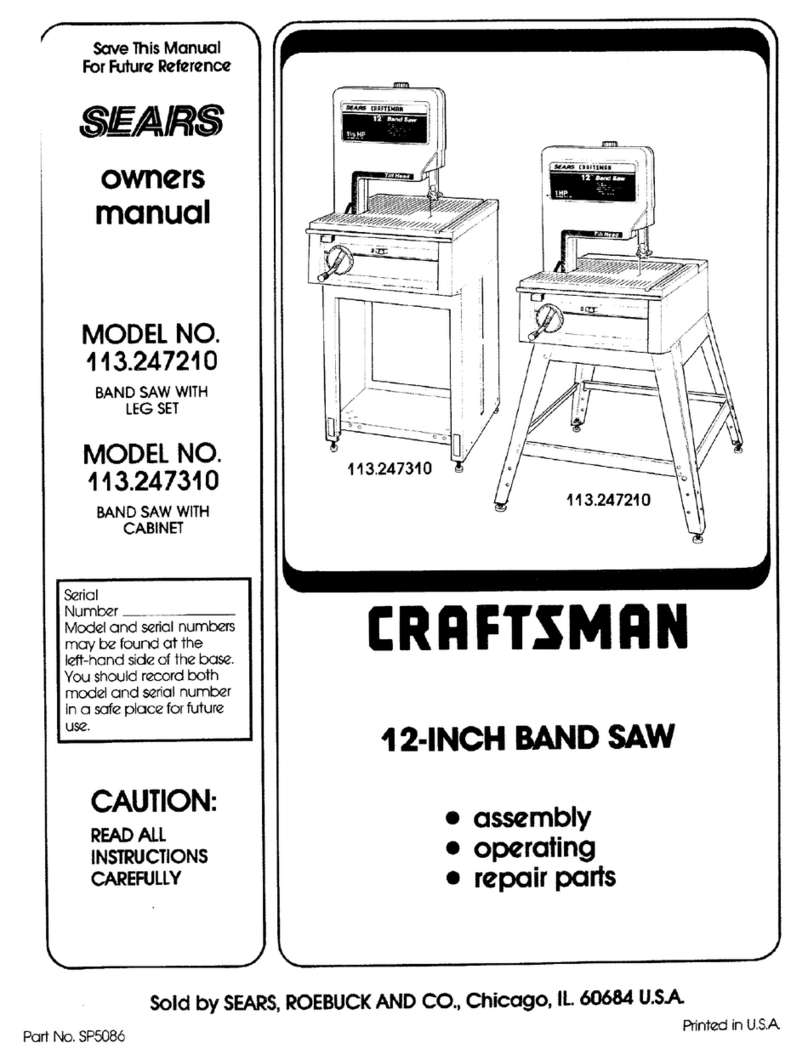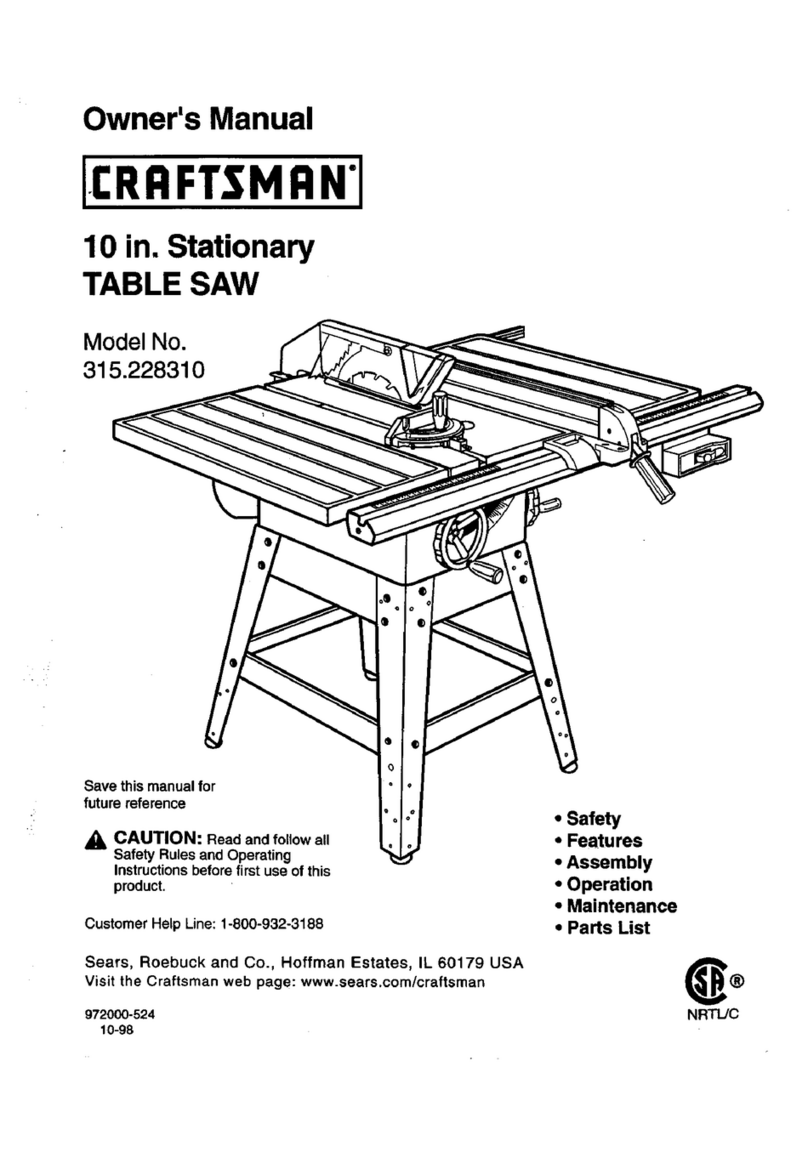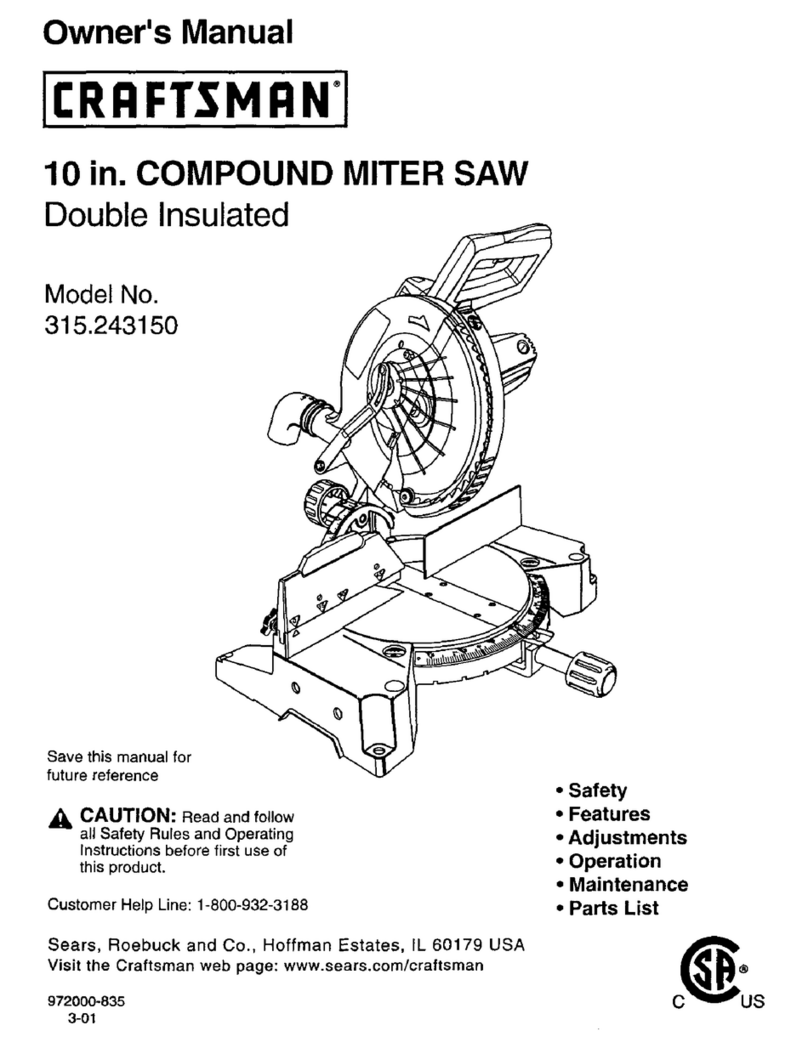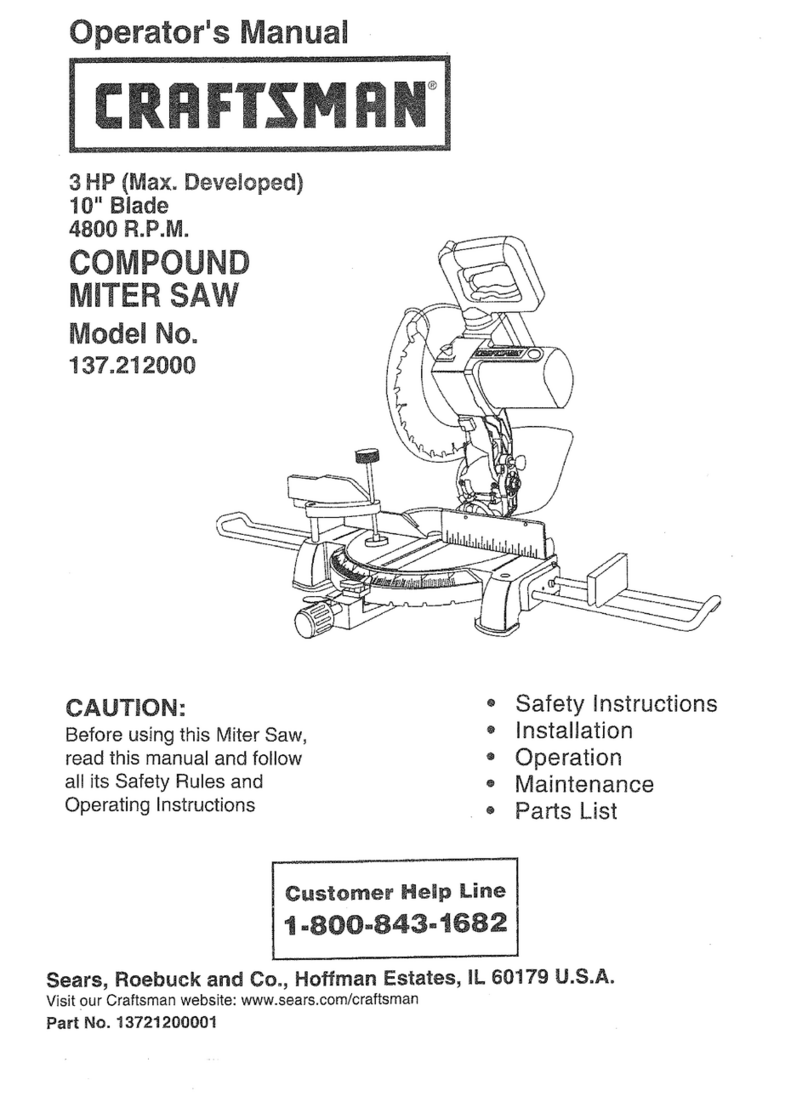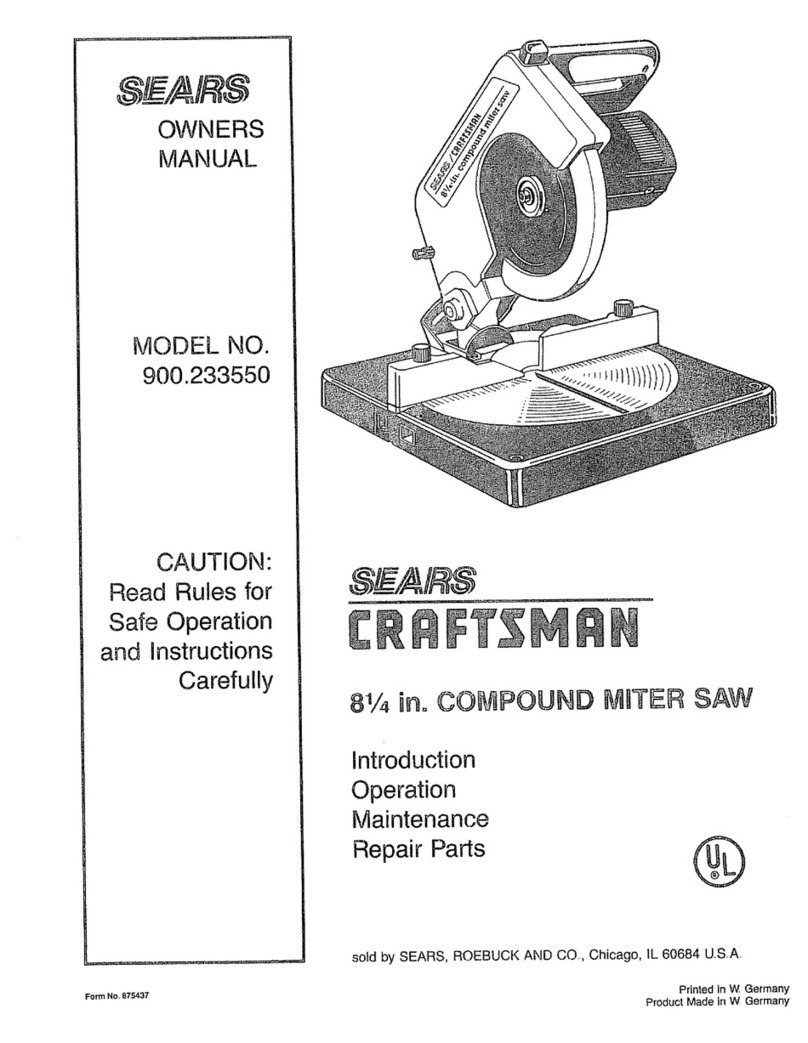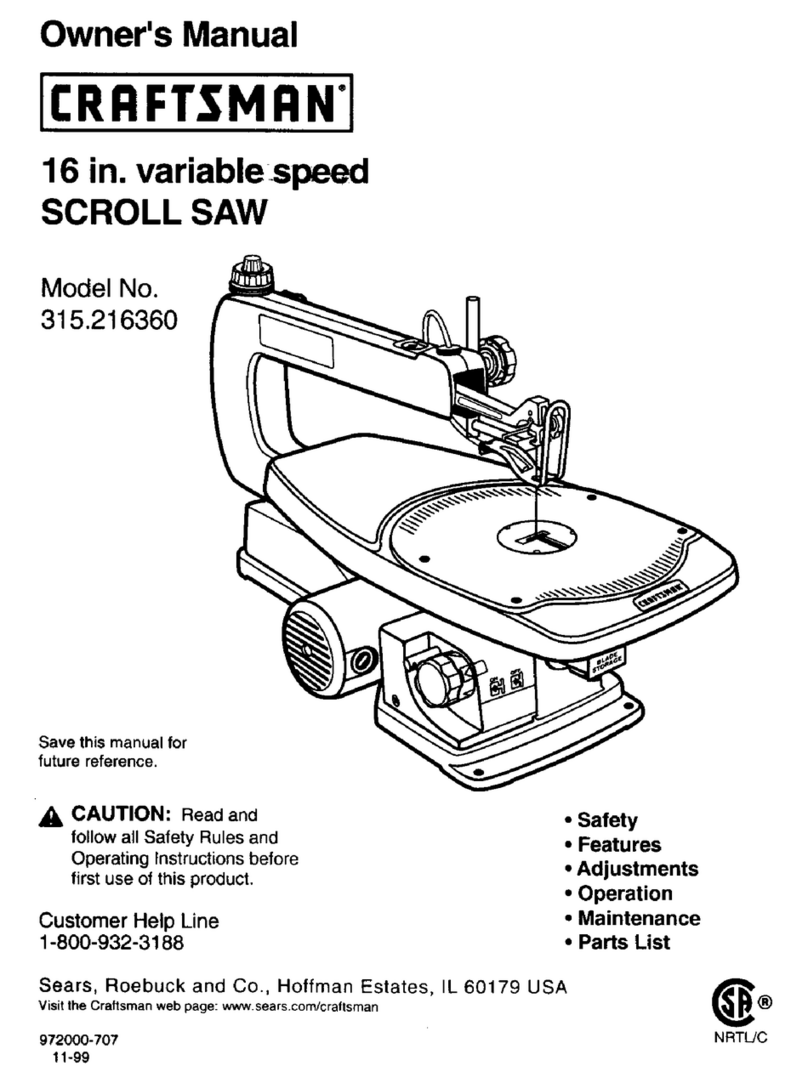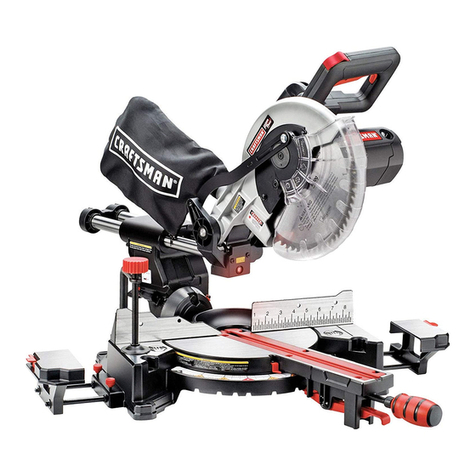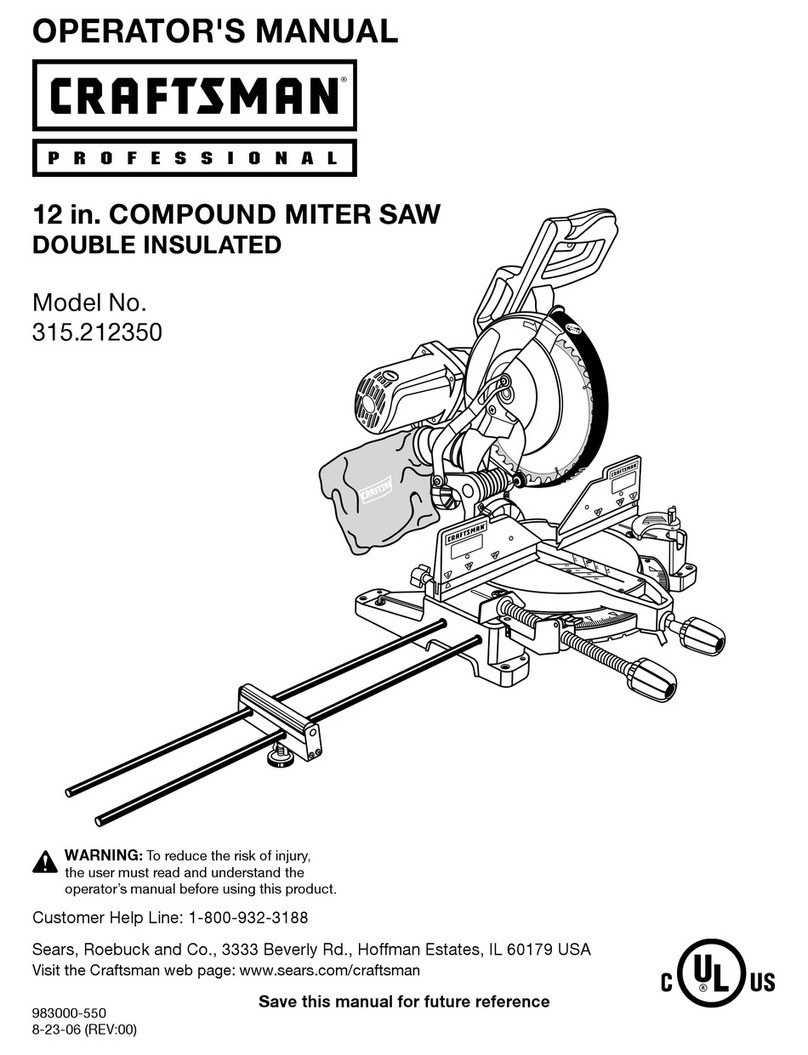additional
safetyinstructions
for radial
saws
removed from the saw arbor before using the
accessoryshaft (rear
end of the
sawmotor). NEVER
operatethe saw
with cutting
tools (including
sanding
accessories)installedon both endsof the saw
arbor.
(B)
RIPPING
'l
. Never apply the feed force to the section of the
workpiece that will becomethe cut-off (free)
piece.
Feed force when ripping must always
be applied
between the saw blade and the fence . . . use a
"PUSH STICK" (see
pg. 261 for narrow or short
worK.
Whenever
possible,
use the in-rip position - this
provides
minimum obstruction
for feeding
by hand
or push
stick
asappropriate.
Do not release
the workpiece before operation
is
complete - push
the workpiece all the way past
the
rear(outfeed
or exit) of the sawblade.
Make sure by trial before starting the cut that the
antikickback
pawls
will stop a kickback
once
it has
started.
Keep
points
of pawls
SHARPI
Use a push stick when ripping short (under 12
inches)
or narrow (under
6 inches
wide)workpieces.
CAUTION: Never reposition the Guard or
antikickback with power "ON".
A "KICKBACK" occurs
duringa rip-type
operation
when a part or all of the workpieceis
thrown back
violently toward the operator. lt can occur when
the workpiece
closes
in on the rear
(outfeed
side)
of
the sawblade
(pinching),
binds betweenthe fence
and the sawblade (heel), or is grabbed by the
sawblade teeth (wrong-way feed) at the outfeed
side. "PlNCHlNG" is generally
avoided
by
utilization
of the spreader,
and a sharpsawblade
of
the correct type for the workpiece being cut.
''H E
EL" can be avoided by maintaining the
sawblade
exactly parallel
to the fence.
Grabbing
by
the sawblade teeth can be caused by heel or by
feeding
from the wrong direction (see
"DANGER"
wa
rning on guard) it can be avoided by
maintaining parallelism of sawblade to fence,
feeding into the sawblade from the nose of the
guard only, and by positioning
the spreader
and
antikickback
property, and keeping
the workpiece
down on the table and againstthe fence.
Position the nose of the guard to just clear
the
workpiece, and position/ad
just the antikickback
andspreader
devicesasinstructed.
NEVER cut more than one piece
at a time by
stacking
workpiecesvertical
ly.
10.
NEVER feed
a
workpiece
thru the
sawwith another
piece
(butting second
piece
againsttrailingedgeof
piece
beingcut),evenif of the same
thickness.
Feed
eachworkpieceindividually
thru the sawblade,
and
completelybeyong
thesawblade,
before
ripping
the
next workpiece.
Use
push
stick if the rip cut isless
than
6" wide.
11. DO NOT pull theworkpiece
thru thesawblade
- positionyour bod1,at the nose
(in-feed)
side
of
the guard:
start and complete
the cut from that
same
side.This will require
addedtable
support
for long
pieces.
12.Plastic
and composition (like hardboard)
materials
may be cut on your saw.However,since
theseare
usually
quite hard and slippery.
the antikickback
pawls
maynot stopa kickback.
Therefore,
rip with the finished
side
down (next
to
the table) and be especially
attentive
to following
proper set-up
and cutting procedures.
Do not stand,
or permit anyone else to stand, in line with a
potential
kickback.
13.When sawing1/4" or thinner materials,
follow all
normal ripping procedures
except set
sawbladeinto
table top at least1/8". DO NOT let go of or stop
feeding the workpiece between the blade
and fence
until you have pushed it completely past the
antikickback pawls.Otherwisethe workpiececould
get into the back of the sawblade
and be thrown
violently from the saw
in the directionopposite
to
the feed direction. This is the same action that
would occur if the instructions
of the DANGER
warning on the guard is
aborted.Do not stand,
or
permit anyoneelseto stand,
in linewith the path of
a workpiece that may be thrown from the saw in
this manner.
14.
Position
the
saw
so
neither
you, ahelper,
or acasual
observer is forced to stand in line with the
sawblade.
15. Useextra carewhen ripping wood that has
atwisted
grain or istwisted or bowed - it may rock on the
tableand/or
pinch
the
sawblade.
(C)CROSSCUTTING
1. ALWAYS RETURN THE CABRIAGE TO THE
FULL REARWARDPOSITION
AT CONCLUSION
OF EACH CROSSCUT
TYPE OPERATION. Never
remove
your handfrom the Yoke Handle
unlessthe
carriageis in this position. Otherwisethe cutting
tool may climb up on the workpiece and be
propelled
toward
you.
2. Place guard in horizontal position and adjust
antikickback
pawls
to just
clear
thetop of the fence
or workpiece,whicheveris
higher.
3. NEVER gang
crosscut
- lining up more than one
workpiece in front of the fence - stackedvertically,
or horizontally outward on the table- and then
pulling saw thru: the bladecould pick up one or
more pieces
and causea bindingor loss
of control
and possible
injury.'
4. Do not position the Arm so the operation you are
perf
orming permits the cutting tool to extend
beyond the edgesof the Table.
(D)
ACCESSORTES
1. Useonly recommended
accessoriesas
listed
on page
34.
Never
operate
this saw
when equippedwith a dado
head or molding head unless
the molding head
guard is installed
- see listing of recommended
accessories.The only exception
is
when "top-side"
dadoing
or molding,
when thesawblade
guard
must
be used.
See
detailed
instructions
that accompany
the dado head,molding head,and molding head
guard.
The use of abrasive
or cut-off wheels,or wire
wheels,
can be
dangerousand is not recommended.
(Abrasive or cut-off wheels are used to saw many
different materialsincluding metals, stone, and
glass.
)
Drill Chuck: Do not install
or use
any twist drill
f
arger
than 1|2-inchin dia.,
or ionger
than
7 incnes
in length or extending
more than 6 inches
beyond
the chuck jaws. Do not install or use
any reduced
shank
drill exceptof the spade
type (1 inch
dia.or
smaller). "Use for drilling WOOD and PLASTIC
onlv."
2.
?
4.
6.
8.
9. 2.
4.
